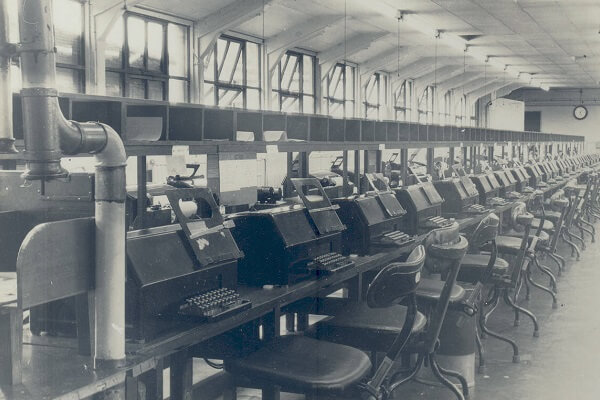Bletchley Park’s New Display for GCHQ 100

As the Government Communications Headquarters (GCHQ), Britain’s most secret intelligence agency, prepares to celebrate its 100th anniversary, a new display at Bletchley Park will reveal never-before-displayed items relating to its transition to peacetime at the end of World War Two.
The new display, opening at the former top-secret wartime home of GCHQ on 19 October, focuses on little-known stories of Bletchley Park Codebreakers who continued to work for GCHQ post-war. This includes talented cryptanalysts like Margaret Rock and Hugh Alexander, alongside less well-known names such as Sir Eric Jones and Sir Arthur Bonsall, who both went on to become Directors of GCHQ.
Star items that will be going on public display for the very first time include:
- An index card on loan from GCHQ recording a letter sent to Bletchley Park’s Chief Cryptanalyst John Tiltman in October 1945 asking that Tiltman ‘be demobilized and posted as civilian to GCCS’.
- The war medals of Sir Eric Jones, who played a key role in co-ordinating Bletchley Park’s intelligence efforts in the build-up to D-Day, and later became the first Director of GCHQ to be appointed post-war. These medals are kindly on loan from Sir Eric Jones’ family.
- A recently declassified nondescript brown book which is one of the most important ‘hut histories’ written by Bletchley Park Codebreakers as a record of their wartime work. The book will be displayed alongside a frontispiece signed by the book’s authors – Keith and Mavis Batey, Margaret Rock and Peter Twinn.
It was at Bletchley Park during the dark days of World War Two that the Government Code & Cypher School’s adopted the cover-name Government Communications Headquarters, a name that became official in 1946. Post-war, many of the techniques and codebreaking expertise built up at Bletchley Park continued to be relevant to GCHQ, though this work is still largely classified.
Erica Munro, Exhibitions Manager at Bletchley Park said: ‘People often think of the Government Code & Cypher School as a wartime operation, but it didn’t stop in 1945, and not all of those who had been recruited during wartime went home or onto different careers. This display is the first time we’ve been able to highlight the post-war intelligence work of some of Bletchley Park’s Codebreakers and I hope visitors will enjoy finding out some of the personal stories, and seeing these incredible rare items for the first time.’
The ‘From GC&CS to GCHQ’ display opens in Block B at Bletchley Park on 19 October 2019 and will run until 2021. Entry to the exhibition is free with a general admission ticket. Under 12s visit Bletchley Park for free.
For more information visit www.bletchleypark.org.uk.
Image: A teleprinter room at GCHQ Eastcote 1949, courtesy of Bletchley Park Trust
